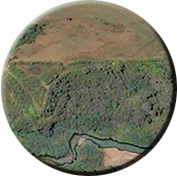Select Projects: |
|
|
PROFILE
OUR WORK
JOIN USCONTACT US |
|
 Western Montana Conservation Easements.
Western Montana Conservation Easements.
Over the past several decades, Dr. Jack Wright has designed numerous conservation easements in Missoula, Granite, Ravalli, Lewis and Clark, Lake, and other Western Montana counties. Each project has a unifying theme, a goal to resolve conflicting visions for the future use of the landscape. Conservation restrictions on subdivision, mining, timber management, and commercial development are based on a conversation between the receiving agency or land trust and the landowner. In many cases, the ranches involved include federal leases on National Forest land.- Integrated Conservation Easement Valuation Model.
Working with researchers and clients across the U.S. Resource Dimensions has developed an easement valuation model that incorporates an ecosystem services valuation module together with typically applied appraisal approaches to derive a more complete economic value for protected lands. The ICEV model has been used in several case studies to assist agencies, organizations, politicians and the general public in understanding the complete extent of 'values' supplied by a variety of protected landscapes (e.g., agricultural, wetlands, open space, and cultural, historical). These analyses have been used to raise public and political awareness, set conservation priorities, and facilitate land use decisions. Valuation studies also provide information on the long-term economic benefits of resource use through conservation versus alternate uses that permanently alter land resources and remove these economic benefits. Such valuations have enabled decision-makers to better calculate the trade-offs of various development options with conservation. - Valles Caldera National Preserve
U.S. Department of the Interior
Resource Dimensions assessed and developed a comprehensive fund development plan to aid the Valles Caldera National Preserve in its efforts to develop private sector funding for a variety of educational, research, recreational, and visitor uses appropriate to the 89,000 acre preserve located in the Jemez Mountains of northern New Mexico. - Sustainable Community Planning
Resource Dimensions has assisted several communities, counties and regionally-based agencies in the US, Scotland, and Canada in developing various integrated strategic sustainable community planning processes, policies, and decision support tools designed to aid in implementing a diverse spectrum of local and regional projects and programs. Through such efforts, we have developed GIS-based asset and issue mapping tools, computer based decision support tools and sustainability matrices, and a range of aids to facilitate diverse stakeholder involvement throughout the collaborative process. - National Farmland Conservation Prioritization Model: Mapping Cost-Effective Farmland Preservation Priorities.
U.S. Department of Agriculture.
Dr. Julie Gustanski served as an advisor to the USDA-funded National Farmland Conservation Prioritization Model developed at the University of California at Santa Barbara, Bren School of the Environment. The purpose of the model is to aid public agencies and conservation organizations in prioritizing farmland for preservation through PDRs, TDRs, conservation easements and other methods. A unique goal of the model was to incorporate both the value of ecosystem services and social values. The project operationalizes the nationwide framework recently developed to help rank farmlands in terms of preservation values. The focus is on four conservation objectives (agricultural, environmental, growth control, and open space), identifying measurement criteria, suitable spatial data, and data processing steps. The project also used database design techniques to develop a spatial data model of the farmland objects, their relationships, and their behaviors, for creating compatible GIS databases. - Evaluation of the Peninsula Township, Michigan Farmland Preservation Program.
Grand Traverse Regional Land Conservancy.
For the Grand Traverse Regional Land Conservancy, Dr. Tom Daniels conducted an evaluation of the leading local PDR program to preserve farmland in the State of Michigan. The Land Conservancy is an active partner in the PDR program. He visited the township and conducted more than a dozen interviews with key stakeholders and program administrators. The report produced evaluates the progress of the PDR program, and makes recommendations for improvements.
- Transfer of Development Rights Handbook
Lancaster County Pennsylvania Planning Commission.
The Planning Commission hired Dr. Tom Daniels and the Brandywine Conservancy to develop a handbook on how to use TDRs. The book explains how the transfer of development rights is being used by townships in Lancaster County, and the steps others can take to create their own TDR programs. This project involved working with a 12-person advisory committee appointed by the County. See the handbook online here. - Consistency Evaluation of the Plum Creek Timber Company Proposed Concept Plan in the Moosehead Lake Region with the Comprehensive Land Use Plan of the Maine Land Use Regulation Commission.
Plum Creek LLC
Resource Dimensions reviewed Plum Creek's plans to develop 20,000 acres and to conserve 400,000 acres of timberland in northern Maine around Moosehead Lake through the sale and donation of conservation easements. The project involved review of Plum Creek's plan, the Land Use Regulation Commission's Comprehensive Land Use Plan, and review of expert testimony by several witnesses. The Team visited the Moosehead Lake site and met with Plum Creek staff. Written expert testimony was prepared and submitted to Maine's Land Use Regulation Commission. The Team also appeared to testify before the Commission on Plum Creek's behalf. - Preserving Critical Lands in New Mexico
In this book for the New Mexico's Task Force "Our Communities, Our Future," Dr. Jack Wright and co-author Anthony Anella examine issues relative to critical lands (agricultural lands, rural landscapes, wildlife habitat, cultural landscapes, and hunting, fishing and recreation lands) and the impacts of population growth on resource land loss. This book is part of a Toolkit Series for the State. It addresses key issues salient to New Mexico's towns and communities, provides an overview of the range of land conservation tools and technique available to help protect the state's critical lands, and identifies examples of best practices from other towns and communities. Read the book here.
Copyright © 2009-2012 • Resource Dimensions, LLC • Main Tel: 253.514.8350 • Skype: 253.777.3733 • info@ecologicalecon.com
